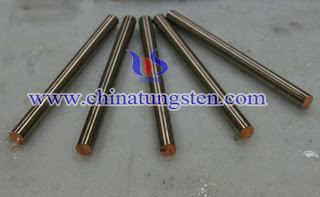KGL Resources has intersected significant widths of near-surface copper mineralisation from exploration drilling at the Jervois
copper-silver-gold project in the Northern Territory.
KGL Resources is aiming to increase the overall scale of the potential multi-metal mining project at Jervois as part of a Pre-Feasibility Study currently being undertaken.
The latest discoveries were made at the Rockface and Morley prospects.
Highlights from Rockface include: 9 metres at 1.21% copper, 4.1g/t silver, 0.03g/t gold from 105 metres; and - 24 metres at 1.47% copper, 3.5g/t silver, 0.04g/t gold from 160 metres.
The Rockface results are very significant in that the intersections are wide, near surface and between two large chargeability anomalies. Mineralisation is outcropping at surface.
Importantly, mineralisation remains open at depth and along strike.
The 2,000 metre drilling campaign intersected copper at the targeted Rockface and Morley Prospects, with the results including significant high grade, near surface intervals and the presence of copper in what is a 2 kilometre long IP anomaly.
Jervois current hosts an Indicated and Inferred Resource of 13.5 million tonnes at 1.3% copper and 25.8g/t silver for 170,415 tonnes copper and 11.6 million ounces silver at a (0.5% copper cutoff), and 69,000 ounces gold, 26,000 tonnes lead and 22,000 tonnes zinc.
Simon Milroy, managing director
“We are delighted with the first results from our exploration program at Jervois, focusing on previously undrilled targets Rockface and Morley.
"The results justify our strategy of seeking to increase the already substantial Resource base at Jervois for the current Feasibility Studies."
KGL is now preparing further drilling to follow-up along strike both to the east and west of the recent intersections, with the program to also target the strong IP anomaly located on strike and 200 metres east to the recent intersections.
Morley
Two holes were drilled at Central Morley to test for mineralisation associated with the recently identified IP anomaly.
Hole KJC002 was the shallower of two holes drilled in the central portion of Morley that intersected: 2 metres at 0.96% copper, 3g/t silver, 0.02g/t gold from 57 metres. Further down this hole at the 77 metre mark, a 2 metre wide zone of tungsten mineralisation was intersected at 0.55% tungsten.
Adding further interest to Jervois, historical drilling at the project have intersected zones of tungsten mineralisation that are often associated with the copper mineralisation and the potential of tungsten to generate additional by-products is being assessed as part of the Pre-Feasibility Study.
Analysis
KGL Resources is currently trading at close to cash-backing, with a market cap. of just $12 million and cash of $10.6 million at the end of September.
A sale of the Murchison gold project, currently on care and maintenance, is an asset with a defined gold resource and valution which would further increase the company’s cash reserves and underpin its under-valuation.
Which is underscored by the resource at Jervois which hosts an Indicated and Inferred Resource of 170,415 tonnes copper, 11.6 million ounces silver 69,000 ounces gold, 26,000 tonnes lead and 22,000 tonnes zinc.
The resource can only increase as the company continues to intersect broad zones of plus 1% copper mineralisation.
In terms of catalysts, KGL is working toward completing the Pre-Feasibility Study in the first half of 2014, which subject to the result, will be followed by a full Feasibility Study.








